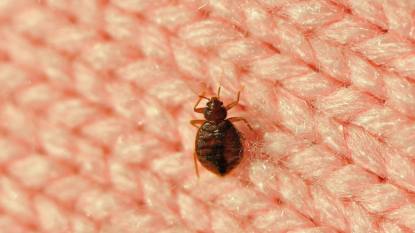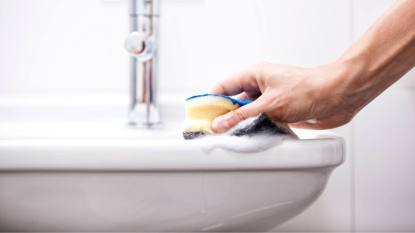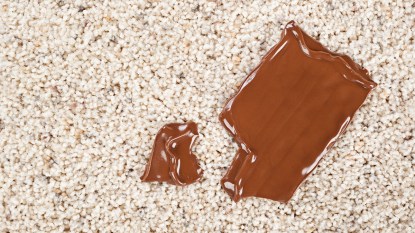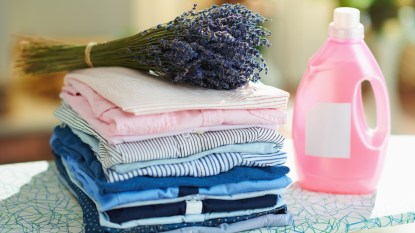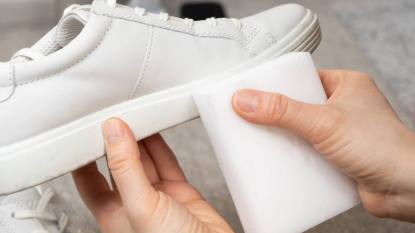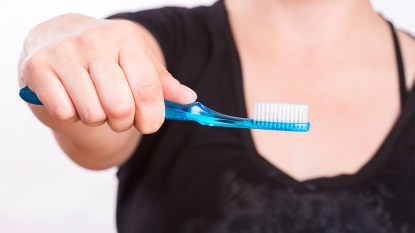How To Clean Your Ice Maker So Your Ice Cubes Stop Giving Your Drinks an Off Taste
Plus, discover the signs that your ice maker may have been infiltrated by mold
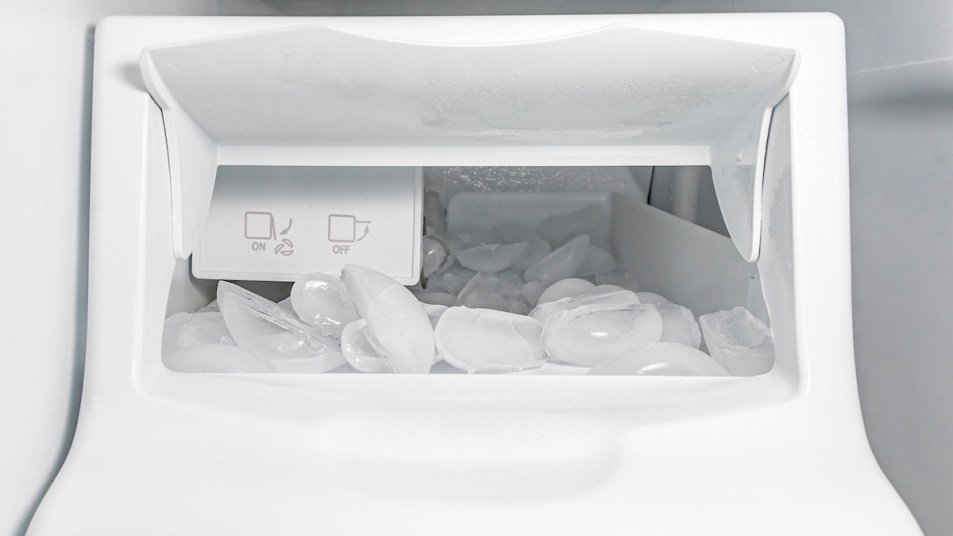
Ice makes all kinds of drinks better, from coffee to juice to cocktails to plain old water. An icy beverage refreshes like no other, but sometimes ice can taste a bit funky or melt way quicker than it should. To find the culprit behind ice with an “off” taste, you have to go straight to the source: your ice maker.
Whether your fridge has an ice maker attached or you use a countertop ice maker, chances are good your machine could benefit from a cleaning. Because an ice maker is an appliance built for one specific purpose, it can be tricky to know what, exactly, is the best approach to cleaning it. We asked professional cleaners to share their tips for how to clean an ice maker, so your drinks can be as refreshing as possible.
How to know if your ice maker needs to be cleaned
So, how can you really tell if your ice maker needs a clean? Sabrina Tretyakova, a Certified Cleaning Technician with Fortador in North Miami Beach, Florida, says there are three signs that it’s time to clean your ice maker:
- Taste/Smell: The ice produced by a dirty ice maker has an unpleasant smell/taste. The taste of the ice overtakes the taste of your drink.
- Appearance: The ice appears cloudy and smaller in size. It also seems softer and starts melting quickly.
- Time taken: A dirty ice maker takes longer to make ice than usual.
If your ice maker is showing any of these signs, cleaning it is a wise idea.
How to check your ice maker for mold
Cleaning your ice maker is also a smart way to eliminate exposure to mold. Ice makers can be hotbeds for mold buildup, says Michael Rubino, a mold and air quality expert and founder of HomeCleanse. “Grab a flashlight and thoroughly look at every little crack and crevice of the machine, including removable parts,” he says. “Mold growth can come in all sorts of shapes, structures and textures. Colors include green, black, grey, pink, red, brown, white or anything in between. Texture variations include slimy, velvety, powdery or fluffy.” Mold can also cause your ice maker to smell musty, leading to icky ice. (Click through to discover why you should never mix baking soda with bleach to kill mold and what to use instead.)
How to clean countertop ice maker
When cleaning your countertop ice maker (or any household appliance, for that matter), it helps to check the manufacturer’s instructions first. Don’t have the instructions handy? Here’s how Tretyakova recommends cleaning it:
- Unplug the ice maker from the power source and drain the reservoir after removing all ice.
- Wash the scoop and basket separately from the ice maker with dish soap.
- Alternatively, mix water and vinegar in equal proportions. Scrub the insides of the ice maker with the solution and scrub with a sponge. A toothbrush can help reach hard-to-reach areas.
- Rinse the ice maker with clean water and wipe all surfaces with a soft rag. Air dry the machine.
How to clean ice maker in fridge
You can’t beat the convenience of an ice maker that’s part of the fridge! However, figuring out how to clean it can it can be difficult. Here are Tretyakova’s steps:
- Unplug the fridge and switch off the ice maker (note: it’s recommended to clean the ice maker twice a year, so you can do a deep-clean of your fridge at the same time). Remove it and clean the ice bin. You can wash it with warm water and dish soap.
- Mix equal parts of water and vinegar to prepare an effective cleaning solution.
- Clean the ice maker by rubbing the compartments with a soft rag dipped in the cleaning solution. Squeeze the excess water and wipe the ice maker to remove all visible dirt.
- Dry it thoroughly before using it.
“When cleaning an ice maker in the fridge, it’s a great idea to clean the appliance as a whole,” says Rubino. “That way, it’s completely clean and not cross-contaminating the ice.” And not only will your ice taste better than ever, your fridge will also be sparkling!
The best cleaning products to use on an ice maker
Instead of using a paper towel, you may want to try using a gentle microfiber towel. “Microfiber towels come in handy because they are 100 times better at removing small particles than regular rags,” says Rubino.
He also recommends using a natural cleaner like Benefect Decon 30 (Buy from Amazon, $8.49). “Botanical cleansers with surfactants are crucial for proper cleansing because they’re able to lift particles from the surface so that they can be wiped away,” he says. The ingredients in botanical cleaners are non-toxic, which is particularly important given that you’ll be putting the ice in your drinks. Cleaning experts across the board also swear by white vinegar. For a homemade cleaning solution, mix one part vinegar to 10 parts water, and add a tablespoon of lemon juice for a fresh scent, suggests Eva Lorena, Commercial Kitchen Consultant at Zanduco.
The cleaning products you *shouldn’t* use on an ice maker
Certain cleaning products are best avoided for this particular job. “Don’t use bleach and other harsh cleaning products that contain harmful chemicals,” says Rubino. “These chemicals can go into the ice, pollute the indoor air quality and cause adverse health reactions.” The last thing you want is ice that makes you sick! Take a look at your cleaning solution’s label: If it lists 2-BE (Butoxy Ethanol), MEA (monoethanolamine), DEA (diethanolamine) and/or TEA (triethanolamine) in the ingredients, avoid using it, as the cleaner may leave a toxic residue, cautions Lorena. (Click through to discover other toxic cleaning products called quaternary ammonium compounds that you also want to avoid.)
What you use to wipe down the ice maker also makes a difference. “It is not advisable to use abrasive cleaning materials like scouring pads, sandpaper or steel wool because they can scratch the surface,” says Tretyakova.
Keep your ice maker clean
Staying on top of keeping your ice maker in good condition is a small step that can have big results. Here are Rubino’s pro tips:
- Change the water filter on time: Check with the manufacturer’s instructions on how often to change the filter and then set a calendar alert to swap them out on time. Some units come with an alert that will tell you when it should be changed, so pay attention to this as well. A filter that’s passed its expiration date won’t filter out any harmful contaminants from water or ice and can harbor particles like mold and bacteria.
- Maintain indoor humidity levels between 35 and 50%: Some species of mold can opportunistically grow in high humidity. To prevent this from occurring on your fridge, make sure that the humidity levels in your kitchen remain low. Creating airflow by using the exhaust fan while cooking can help you achieve this ideal level.
- Clean any spills as soon as possible: Contaminants such as mold and bacteria require moisture to grow. Quickly removing any liquid removes this opportunity and will help keep your ice machine safe.
- Regularly check for any problems: Microorganisms such as mold and bacteria are persistent. Even with all of the steps above, sometimes they’ll still find random ways to pop up. Thoroughly check the machine routinely to ensure that there aren’t any problems that need to be addressed. The sooner you catch an issue, the less contamination there will be.
By following these steps, you’ll be more likely to have a mold-free environment for your ice.

How often to clean an ice maker
Typically, portable ice makers need to be cleaned more often than ones in the fridge. It’s best to clean a portable ice maker every month or two, while a fridge ice maker only needs to be cleaned two to four times per year.
Tretyakova notes that the climate and the quality of water in your area can make a difference in how often you need to clean your ice maker. “If you live in areas with high humidity, mold or fungus formation can happen frequently. So, the frequency of cleaning your ice maker should be at least once a month,” she says. “And if the water quality is hard in your area, the ice maker can have mineral deposits that can compromise the ice’s taste, so frequent cleaning is necessary,” she says.
With all the tips above, you’re sure to have ice that stays frozen and tastes just right. Now bring on the cocktails!
Find more kitchen cleaning tips here:
The Astonishingly Easy Way to Get the Glass on a Toaster Oven Crystal Clear in Seconds
The Best No-Work Ways to Clean Oven Racks
Cleaning Pro: The Easy Secret to Whisking Away Melted Plastic On Your Stovetop


